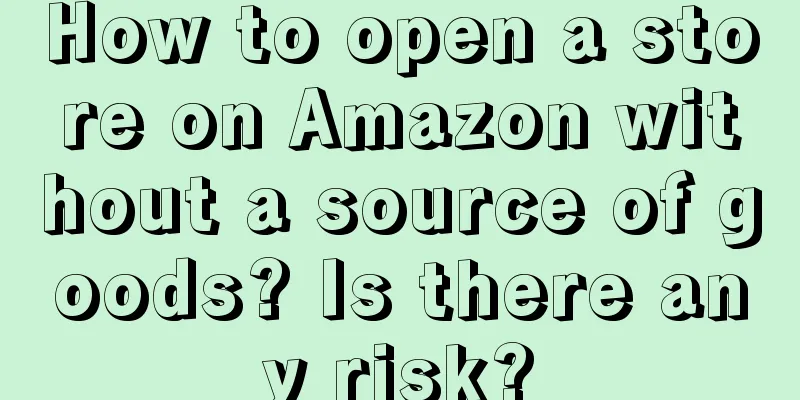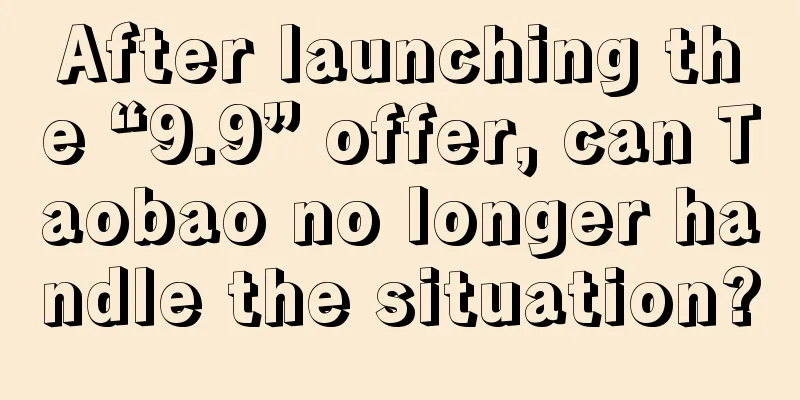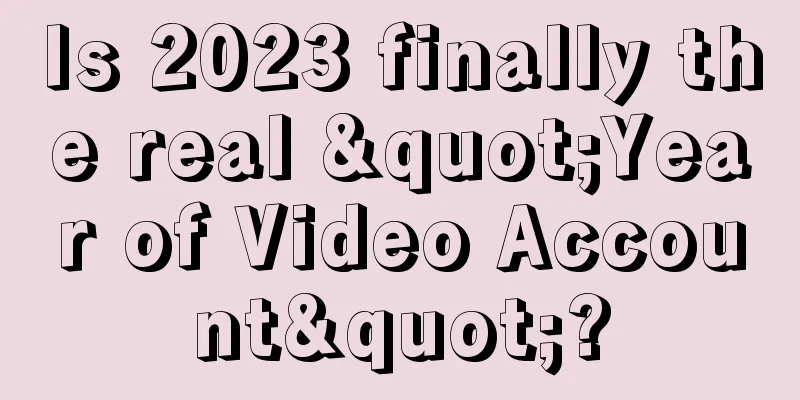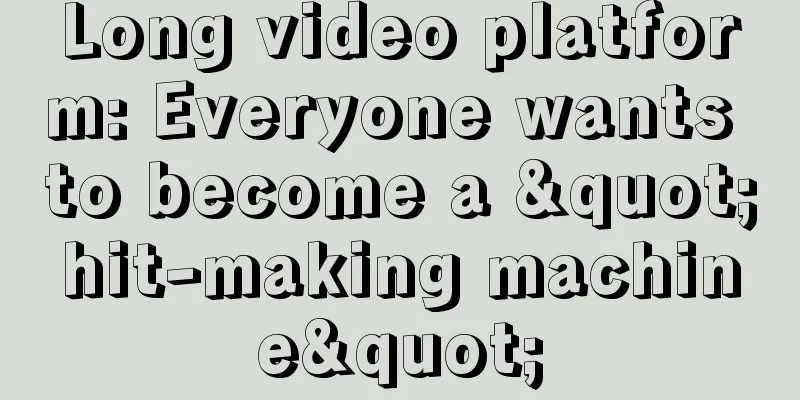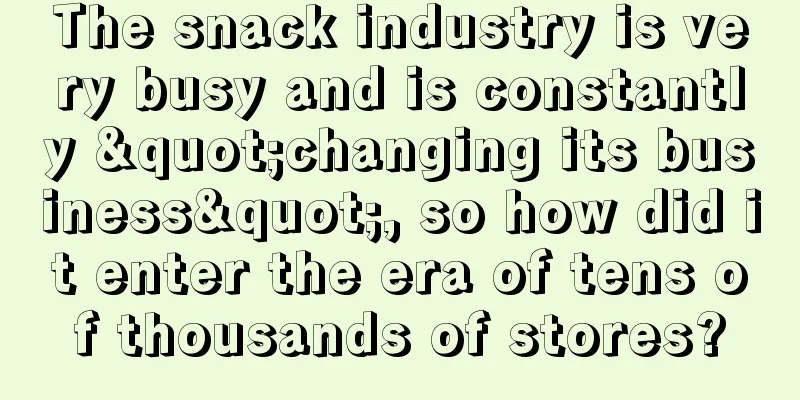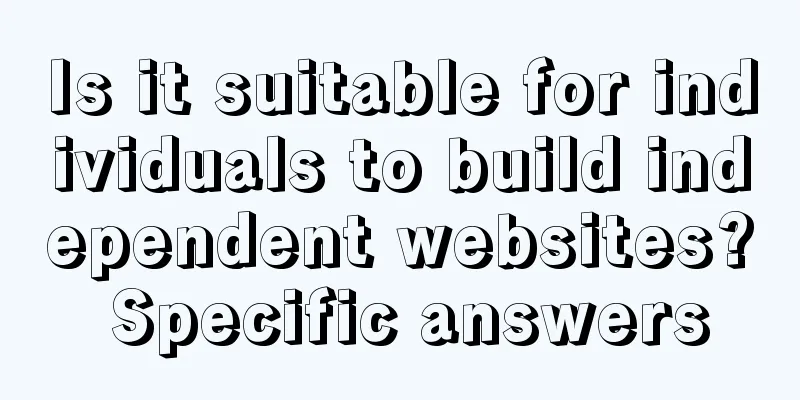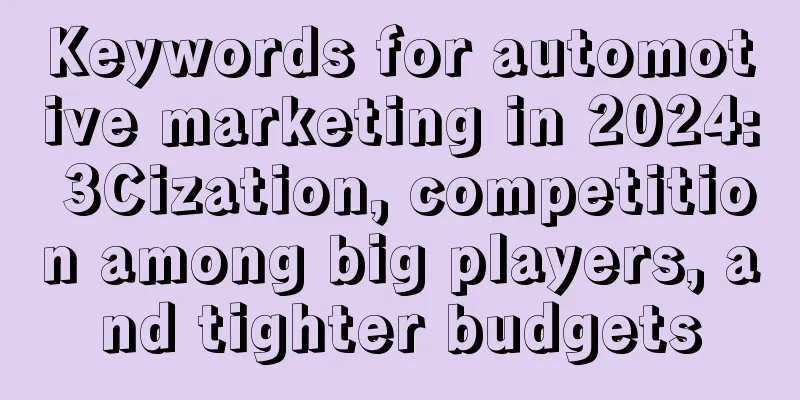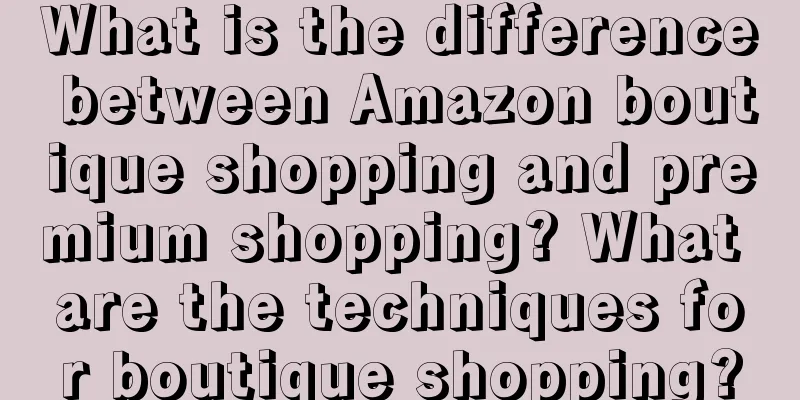Recognizing user value and transactions
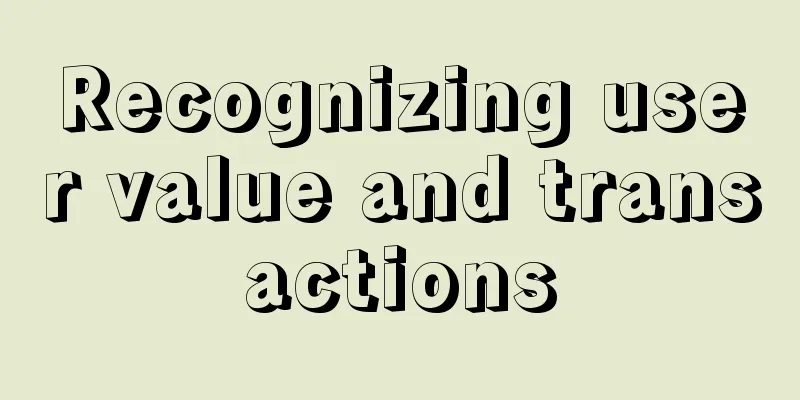
If user value and transactions need to be explained in great detail, I think 10,000 words are far from enough. If you haven’t made many products and decisions, each word that describes value needs a lot of boundaries to be described. If I were asked to write a few hundred words about user value now, I think it would be very difficult. I am not sure if I can do it in ten years. But with my current level, I think I may not be able to write it clearly even in ten thousand words. Although this article looks a bit messy and there are a lot of things, this is the amount I can use to roughly explain this conclusion. I will mainly talk about what user value means. 1. Cognitive TradingUsers will seek and evaluate the utility of products and change their "status" because of their needs. Products are the carriers of utility. Because people are different, their evaluation of utility is also different. The overall process of using products to obtain utility, change status, and pay costs (time, emotions, energy, etc.) is considered a transaction. The establishment of "transaction" itself is the basis for the establishment of a business model. It is also the basis for all subsequent product work. The demand in the transaction: we can break it down into users, not people, but a collection of demands. Users have different heterogeneity, situational, limited, selfish, and plasticity, and these factors ultimately affect the user's subjective evaluation of utility. We also have a "Tao" understanding of users: what controls users and what influences users. The main factors are genes, society, culture, cognition, prejudice and bias. By understanding user value and utility, and understanding transactions, we can look at the business from a more macro perspective, which is to fundamentally produce a utility combination that maximizes profits. So how to produce the utility combination that maximizes benefits requires us to look at how companies produce the utility that maximizes benefits from a more macro perspective. This leads to our overall goal of having a deep understanding of user value. 2. Recognize User Value1. UtilityThe user value we are discussing refers to the use value, which has a professional term called utility. It is impossible to have a clear definition of value, because value has multiple concepts, so we describe value from different dimensions. Utility is not something I invented, it is a term in economics. In the early days of Marxism, all they talked about was production. When production is insufficient, in fact, you will produce value when you produce. Only during the Industrial Revolution did these disciplines emerge. It was impossible to produce this kind of knowledge before, because the productivity of the agricultural society was insufficient. The machine revolution brought about a huge productivity, which could change the production relations. The Industrial Revolution greatly created the abundance of materials. It was an order of magnitude and geometric change. After that, humans discovered the phenomenal change and then studied it. Then related disciplines emerged. When materials go from being scarce to being not scarce, because machines produce many things that are not scarce, as long as you put in the labor, you will create value. Through labor and division of labor, you can create large enough objects and commodities. But at a certain stage, you will actually find that the establishment of a company is still "creating value", so why does this company go bankrupt? There may be more companies that go bankrupt every day than those that are registered. In addition to the bankruptcy of companies, why are there still so many products that fail? The establishment of a company is to provide services and goods. For example, producing a beverage is to provide a service. The products and services produced are different for users. Even if you provide a video for others to browse, production can create value, but the value of production is measured in different dimensions. The products produced may become valuable to a user because of the huge increase in productivity. Let's take an example. If you produce a mobile phone and sell it for 100 yuan, then the utility you generate must be greater than 100 yuan. Under the premise of free choice, transactions must create value. The earliest saying is that exchange creates value. You produce mobile phones, the cost is 100 yuan. You sell it for 101 yuan. Another company can produce products with similar performance and value, but its cost is 90 yuan, and it sells it for 91 yuan. At this time, have you created value? You sell it for 101 yuan, but you can't sell it. If you sell it for 90 yuan, you will lose money. If the sales volume increases, you will die, and the company will go bankrupt. Under the premise of competition, production does not necessarily create value. When the market is scarce enough, you can create value by producing products. When smartphones have not yet reached sufficient penetration and billions of people around the world do not use them, your products will have value. When products are abundant enough, the difference in the new value of your products will have utility. For users, they have gained a certain relative value. This is the only way to ensure the survival of the company. The most basic principle of utility is the individual subjectivity of utility. The biggest characteristic of utility is individual subjectivity, which varies from case to case and from person to person. You buy this phone for 100 yuan, some users buy it, some users don't. We can use the example of diamonds to better illustrate the subjectivity of individuals. A diamond ring costs 100,000 yuan. The person who gives the diamond ring thinks that although I spent 100,000 yuan, the utility I get varies from person to person. Desires are infinite. When you give your girlfriend a diamond ring, the utility you want to get is also different. It may be an emotional need, but for you, this effect is greater than 100,000 yuan. You buy a diamond ring, and the utility you get is a combination. The emotional utility is greater than 100,000 yuan for you, otherwise you would not buy it. Another person thinks that a 100,000 yuan diamond ring is too expensive, so he is not willing to buy it. He is willing to buy a 20,000 yuan diamond ring. How much he is willing to pay depends on his ability to pay for the utility he is willing to obtain. Maybe his monthly income has exceeded 100,000 yuan, while another person may only have a monthly income of 5,000 yuan. His ability to pay is different. There is also a problem of total utility. People pursue total utility. Another person also has a salary of 100,000 yuan, but he bought a house and has a loan of 50,000 or 60,000 yuan every month. The house takes up most of his expenses, so his spending on diamond rings and overseas travel needs to be reduced. People pursue total utility and always make decisions in a process of repeated weighing. A person's pursuit of diamond rings is not just about one utility, but a comprehensive one, such as how much to allocate to buying clothes, buying electronic products, and studying. Diamonds and water. Diamonds are useless, but they are valuable. This has been a controversial issue before the emergence of utility. Water is useful, but it is indeed not valuable. Whether it is valuable or not is an objective value, and the objective value is determined by exchange. Utility is determined by individuals, and it is different for individuals in different scenarios. A bottle of water in the desert, you are dying of thirst, and the utility behind this bottle of water is a life. As long as there is no substitute, its value is approximately equal to life. If you can get a bottle of water at any time in a normal environment, then it is not that valuable, and I am willing to pay one, two, or three yuan. If you buy a bottle of water in a bar, it will cost you 15 yuan, but in a large supermarket, it will cost you 1 or 2 yuan. The most important thing is a constraint. Your utility is constrained by the scenario, which is actually a constraint. For example, in the taxi industry, after 9 o'clock in the evening, the utility may be different, and your ability to pay may be different, because many companies can reimburse taxi fares after 9 o'clock. The weather is also a constraint. For example, if it is sunny and windy, you don't care, and you will have many travel options and alternatives. But if it suddenly rains, the substitution utility will be completely different. The substitution utility of being able to get a taxi and not being able to get a taxi is completely different. 2. Diminishing Marginal UtilityA grows a lot of rice, and B weaves a lot of cloth. A's first portion of rice is still very useful, but the second portion is not so useful. The first portion is useful, but the second portion is not useful. If you continue to eat, you may die of bloating. From the first bite, your utility decreases. The same is true for weaving cloth. Your utility decreases with the second, third, fourth, and fifth pieces. You take your extra grain and exchange it for another person's extra cloth. But does the total material change? No. But the utility between you has increased. But people don't necessarily have the right items to trade, so humans invented money. Use money to trade. The essence of money is that this piece of clothing is defined as 100 yuan, which implies that you can buy 1 point of grain. Of course, my first portion of grain must feed myself, but I think the value of the second portion is lower than the utility that I can get from other items in the market with 100 yuan, and the value that other items in this world can bring me. So I have to sell the remaining grain and exchange it for 100 yuan. I can buy any item that brings me more than 100 yuan of utility, and it doesn't even have to be material, but something that brings me happiness. This is the essence of money. When you sell, it means that you can use the money to get higher utility than the current holding of the item. For example, when you go to a pharmacy to buy medicine, the medicine is for curing diseases. For example, a box of cold medicine is sold for 50 yuan. The utility of this to an individual is far greater than 50 yuan, whether you have a cold and are in pain or for other reasons, it must be greater than 50 yuan. But why does this store sell it to you? Because the utility to him must be less than 50 yuan. It is a bargain for him to sell it. The cost of obtaining this medicine is far less than 50 yuan, so he can earn the difference. If you buy this, it must mean that the utility is higher than yours. These examples show that exchange brings utility, and there are prerequisites for transactions to bring utility. The first is that you cannot force buying or selling, and the second is value expectations. For example, if you are sold fake medicine, the value created may not be established. Another example is the problem of fake goods on Pinduoduo that many people talk about, or it can be said that most of it is not a problem. The value of most of the goods he sells is higher than his price. It is higher than 9.9 yuan. He uses 9.9 to sell substitutes on other platforms, which is actually lower than what can be bought on Pinduoduo. It is actually quite difficult to buy a fake product that is not worth 9.9 for 9.9. For example, if you deceive the buyer and the thing he bought for 9.9 is not even worth 9.9, then this is considered a problem. 3. Resource endowmentFor example, when I look for a job, I can think of myself as a product and my job as a product. You can choose this company or that company. Different companies have different values for you. You can go to a very large company to get gilded. Is it technology-driven or business-driven? This company will give you a lot of money and a good mentor. This means that you will have a lot of differences when looking for a job. For example, what this company does is what I have done before. It is easier for me to adapt to it and it is easier for me to give full play to my abilities. Or what the company provides is something I really approve of. I think it has a promising future and is very promising. There will be a big difference in this. Because the utility of this is not the same for everyone. For example, if you have a poor academic background, then the value of your going to a big company to gild yourself will be much greater. If you have a good academic background. Or you are not recruited from campus, but from society. You have been gilded by a big company. This is a resource endowment. Resources are acquired after birth, and endowments are innate. It is easy for a handsome man to find a wife. He asks for this and that, and he doesn't worry about not being able to find a wife. But another person, he may not be handsome at all, and his requirements will be different. 4. CognitionCognition is about emotional value and rational value. For example, Meituan may not have used big data to target customers, but if users think you are using big data to target customers, then you are using big data to target customers. Because user value is always subjective, only what users understand and recognize is valuable, and what users understand but do not recognize is useless. Users think you are using big data to target customers, or you say something valuable, as long as users do not perceive it, or perceive it but do not hit the cognitive point, then users will not recognize its value. They will not pay for it. Trust is a factor that seriously affects transaction prices and transactions. This is perceived value. Whether the same transaction can be established depends on how everyone views the same event. Everyone has different perceptions of this event. Every time a hot topic breaks out on the Internet, you can go online and see that people have different views. How is human cognition formed? The first information is that some people lack information, so you can solve this problem by giving them some information. However, some things are problems with the thinking framework, the thinking mode of each person. Everyone's thinking is not isolated. People do not exist in isolation. They are social. Your experiences and thoughts from birth to now have formed a thinking framework. What you think is actually the sum of all your experiences and thoughts. For example, you think that the market economy is wrong and that taking a taxi should not be more expensive than taking a taxi. This is all a cognition. In fact, people's cognition is different. They have different thinking frameworks. You can see the thinking framework behind what they say. Some people are not informed enough. You need to give them more information so that they can react. How people's cognition is formed may be due to information asymmetry. You can reverse it by giving them information. Some people just can’t change their mindset, so there’s nothing you can do about it. Some people have preferences. In the same situation, some people prefer to take a taxi, while others prefer to take a private car. Even the landlord who rented my house said that he might be a second-generation Beijinger, but he just thinks that taxis are too expensive, so he only takes rides. This is a preference, such as whether you like tea or coffee, or whether you like to eat sweet or salty tofu pudding. Bias is a cognitive bias. Human instinctive genes will bring many biases, and physiological reactions will instinctively bring you many biases. People are very different. There are also cultural influences. The concepts that influence the formation of many concepts, many rights, obligations, behavioral choices, attitudes towards money, people are very different. What we think is reasonable is preference, and what is unreasonable is bias. The most basic examples are some biases caused by genetic products. You will unconsciously watch advertisements outside, especially those related to food. The human brain is very fast and intrinsic, just like memory, it reads very quickly. It reacts without letting you think logically. Examples of errors caused by genes. Food, sex, and danger. Those who are not sensitive to food have died. Those who are not sensitive to sex have not died, but they have no offspring. Those who are sensitive to danger will also die. These are all instinctive reactions. If you look at biology, they are all reactions of some cortex of the brain. These are useful for your survival, but they are wrong for your survival. There are 170 to 180 cognitive biases on Wikipedia, such as the placebo effect and the framing effect. So our genes actually have many biases. The same bowl of rice, a cup of coffee, or a takeaway meal is perceived differently by everyone. So we eat differently, wear differently, and when faced with something, our behavior is also completely different. This is the individual subjectivity of utility. When it comes to the explanation of the effect, in fact, human research on utility has shifted to the field of individual consumption. Because of individual differences, all transactions have value. Value does not mean that only production can create value. It is valuable to produce 11 points of grain from 10 points. 10 points of grain is definitely better than 10 points of grain. The utility is different and cannot be compared at all. It is impossible to compare whether the cloth is in the hands of one person or another, and the effects between people are also incomparable. 5. Utility cannot be absoluteIs it better for a family to have one car or two cars? This cannot be quantified. Transactions determine value, and transactions are not necessarily between two people. Transactions between two people are bilateral transactions, and there are also unilateral transactions. A unilateral transaction is a transaction between you and the world. Let's look at a sentence to explain what a transaction with the world is. Every action of a person is a transaction with the world. You choose to perform this action or another action. You choose the one that maximizes utility. But it is essentially a transaction, except that there is no money transaction. Logically, this behavior is more rational. So the rationality mentioned in economics is the rationality at the level of cognitive value. It is the rationality after all constraints and restrictions are removed. In this way, it is more painful for us to study users, because there is a lot of uncertainty in our understanding of users. The effect of a product is what kind of utility it can provide to users and what kind of values it can satisfy. Utility will increase with similar items and is relatively comparable. Sometimes utility refers to price, because price is determined by the market, just like many economists say that Meituan’s takeaway pricing is too high, because the pricing is ultimately determined by the market. A company is not private, and without control, it will definitely set prices randomly. Because prices are determined by the market, and companies also seek to maximize the utility of constraints. The market itself is a layer of constraint. Whoever can provide this effect at the lowest cost in the market will get the lowest price. Although the market price is high, it is not all-round. High is also dynamic, not static. If you raise the price today, many companies will come in to do business in the field tomorrow. This is dynamic. What will happen if a company monopolizes? If you look at economists, they will not look at the problem this way. Market economists believe that monopolies need to be supported by huge profits. Without access rights, they are not monopolies. 6. Local Value – Overall ValueI have to make this decision, and pursue the maximization of value. How is the maximization of value measured? What is the time scale of this maximization of value? If it is measured in the dimension of five to ten years, the result of the decision will be completely different. Is it the KPI of this quarter, or the KPI of one year? Or the KPI of five years. Or a dimension of ten years, or both. Because once you consider long-term value, you are playing games with users countless times, and you must consider the overall balance of interests. There is no problem of values at all. The so-called values are to take short-term interests into consideration without considering long-term interests, and to take local interests into consideration without considering overall interests. For the sake of one product line, there may be other product lines that need to be considered, and for the sake of a part of users, the overall users are harmed. For example, if I do this push, you as users will definitely receive a lot of pushes. Many products like pushes, because even if the conversion rate is low, it maximizes the short-term value of this department, this team, and this business. But in the long run, the user will definitely be hurt. The more you push, the more users will ignore this thing and ignore all future conversion rates. It is a local and global, short-term and long-term, and most of them can be explained in this way. In fact, it is not necessary to judge the product in the conventional ethical sense. It seems that I have not encountered it yet. Maybe I have, but at least I have not encountered such a serious situation that I need to make an ethical judgment. So we know that short-term value and long-term value, and the meaning behind user value is different. 7. Emotional Value – Rational ValueIf people don't understand how safe our travel is, for example, when comparing travel platforms with taxis, if a travel platform has a major safety incident, everyone thinks that the travel platform is not as safe as taxis. Not everyone thinks so, as users are scattered, but a considerable number of users think that the safety comparison between travel platforms and taxis has changed significantly. It's the emotional value. Whether this incident happens or not, does the safety of the travel platform change? Yes, but they are all developing in a positive direction. Have the travel platforms improved? Of course they have improved. In fact, the platform has made more safety guarantees, but in the user's perception, the safety incident, one month after and before, if you investigate the safety comparison of users on the travel platform, it is a process of rapid decline, but the rational value, we are not saying that it is rising rapidly, but it is a process of obvious rise. For example, in a city with a population of four or five million, it is normal for a taxi to have a traffic accident a year, which has no impact on the company. Well, if the traffic accident is caused by the travel platform, it is valuable to self-media and so on. As long as you are on the self-media, they will forward it. Because the travel platform will cost more as a large company. This is another question. It is a question of public relations. If it is not just the high value of the travel platform's communication utility, in a city with a population of four or five million, if you spread this matter, at most only four or five hundred people will know. Assuming that only 5% or 10% of people may notice it, there is actually no communication effect. But the traffic accident on the travel platform, then it may be spread by 5% or 10% of people in China, and the impact is very large. That is a bunch of self-media, even if you don't pay it, it will still be on the Internet. In many places, some self-media are going for traffic, not necessarily paid by competitors. This is the way it is in this era anyway. Taxis only operate in one city, and it is normal for these four or five million people to have a serious accident. Because the company does not have a big influence. But the travel platform has more than 300 cities with four or five hundred people. You provide services to the whole country. If you have the same probability of a serious incident as taxis. We have 400 to 300 people a year. If you only post one-tenth of your information on Weibo, it will be even worse if all of it is posted, with traffic accidents happening every day. But in terms of ratio, you and that team have the same results. We achieve 0.6 times that of taxis. In fact, for example, if 300 people die in a year, even though only one-tenth of them are spread on Weibo, we will not be able to survive, which is equivalent to a serious accident every two weeks. But if 500 people die in taxis under the same process, we still save 200 people. People can't feel it, they just know that you often have traffic accidents. Although you won't spread all of them, as long as they are on the news once every two weeks, people will think that the travel platform is particularly unsafe. This is the difference between emotional value and rational value. Of course, we have to do both of these two values, because how can users know what safety measures you have taken? If you don't let them know, you are doing it in vain, and your user value is low. Because users judge whether to use a certain product based on emotional value. So we must do a good job of emotional value. But on the other hand, if we only do emotional value without rational value, it's not like those who sell fake drugs. They don't have the effect, but they say that they have the effect, and not only do they have the effect, but they are very high. But in fact, they don't. Because in the long run, emotional value will return to rational value. But this scale is not easy to grasp. Because you see companies that are very good at marketing. They will have a certain degree of exaggeration. But to what extent you are deceiving users is not easy to grasp. But we are not deceiving users now. Our emotional value is far lower than rational value in many places. Speaking of emotional and rational values, there is also the value of speaking and the value of doing. We need to do both rational and emotional values. But what you say to users is emotional value, and what you say and what you do are the same. It is necessary to say one thing and do another. How to explain it? For example, in the last US election, between Trump and Hillary, Trump's victory was very close, with only a few points. And later it was revealed that Zuckerberg's team used the big data leaked by Facebook. Zuckerberg had to testify in Congress, and his stock plummeted. Then it was revealed how the Cambridge Analytica company he used did it. This company mainly obtained the user tendency data of Facebook to judge his tendency. But what to do after judging the tendency, because Hillary is widely sought after by the elite, including aristocrats, traditional rich people, and those elites who made a fortune from globalization and high technology, so Hillary received more campaign funds than Trump. Hillary said, "I get a lot of money, so I try to promote to everyone, saying how good I am, and please choose me." Trump got the user data, and once he split it up, 40% are Trump's die-hards, so I won't spend a penny on them. The other 40% are Hillary's die-hards, so I won't spend a penny on them either. I spend my money on the 20% of users in the middle. Then, because 11% of people swayed to me, I won. This way, he must be efficient, because if you spread it out to everyone, it's several times more than Hillary's. Because you only promote to this 20%. Hillary promoted to 100% of the users, and Trump's expenses for this group of users were five times that of Hillary. What can I say to this group of people? In fact, Trump can do whatever he wants, as long as it doesn't break the law. In fact, it doesn't matter what kind of person you really are, but of course you can't lie, that's what it means to do one thing. But what you say only depends on the conversion rate. What can you say to convert the 20% of users to your side? As for what you said, whether Hillary's 40% of people will scold you or your 40% of supporters will praise you, you should not be moved by praise or scolding. You only care about the conversion rate of these 20%. This means saying one thing and doing another. Let's share another case to illustrate the value of expression. How to choose the value of carpooling promotion? You have the value of sharing low-carbon life and the value of fashion. Senior white-collar workers like to hear this. Then you can target this user. If you want to convert this group of people, you can talk about this content. Then the price of carpooling is cheap. Some places and some groups of people like to hear this. So when you are targeting this group of people, you should promote this. For example, in places where supply is scarce. This is the difference between being able to get a car and not being able to get a car. You can find many unique points. Do I have to talk about all these value points? It doesn't make sense, but you have to do it. Anyway, you have to do all the advantages, so that you can meet the user's desire constraint combination conditions. There are thousands of faces and users are different. You can do whatever you can. Of course, the final trade-off principle is that our resources can create the greatest value, because desires are infinite, and utility is the satisfaction of desires. Human desires are infinite, not just in terms of types. The same goes for my money. I want to save money, and the same goes for time, which is best to be very fast. Then there are considerations for physical comfort, the aesthetics of the car model, no odor in the car, and safe itineraries. There is also a sense of belonging, and every time they upgrade my cabin, they treat me as an important person. Self-esteem, for example, very special content for users: the text shows that you are a VIP, and you will feel much better. These types can be infinitely superimposed, and the degree can be infinitely superimposed. If it is cheaper, it can be cheaper, and if it is faster, it can be faster. It is infinite. 8. Short-term value – long-term valueIf you only serve one user, it's fine. The more the better. But if there are multiple users, there may be conflicts. When this car comes, who should be given the ride and who should not be given the ride? This will cause conflicts. If there are fewer cars, it is impossible to be fast. If you want to drive fast, many drivers will have empty cars. Improving the efficiency of issuing orders is constrained. You can increase the speed of receiving orders by 50%, 60%, 70%, and you can also increase it to 100%. The principle of selection is still the same. We choose which ones to do, which desires I choose, which utility combination is the most cost-effective, and it is not necessarily the largest number of users, but the part of users who pay the most. Therefore, it is impossible for the product to be completely personalized for thousands of people. The cost is too high. I can only choose to satisfy part of the utility. Which part of the utility I satisfy, where I cut it, is to choose the packaged utility combination. For example, carpooling has many things that users want. Based on my costs, I can see where to cut the price, where to cut the comfort level, and where to cut the price. I can limit the choices and how to limit the breach of contract, so that I can make the most money after choosing these combination effects. This is the doing part. There is also the talking part, how can I convert the most users? This requires a lot of trade-offs. The so-called trade-offs are to consider countless constraints. The desires of users are unlimited, but goods and items are limited, especially for travel platforms, which can only carry a limited number of cars on the road within a period of time. Physical, psychological and environmental constraints are all constraints. For a company, the first constraint for creating user value is cost. The first thing is to create user value, and then sustainable development. But what kind of user value do we want to create? Of course, it is profitable user value. Why should I create value that is not profitable? Of course, this profitable value is viewed from the perspective of long-term value. From the perspective of global value. It is OK for you to be unprofitable in the short term. You see, we have lost tens of billions of dollars in subsidies. It is also correct. It is a loss in the short term. This is also valid because there is long-term value, and you can build your scale effect. Sometimes, some orders and some strategies will result in losses. But there is no way to deal with it, because the product is a package effect. 9. Asymmetry between product effects and user desiresYou must provide package combinations. Sometimes the utility you provide exceeds the user's needs, and sometimes it is lower than their needs. Users also have different needs. You can only provide a one-size-fits-all option. In fact, it is a one-size-fits-all option, providing several packages. So it seems that each of your products is actually a package. For example, when you go to a restaurant to eat and are offered a salad, this is also a combination utility. You won’t ask him how much the lettuce costs, how much the purple cabbage costs, or how much the salad costs. This is a combination utility, and the question is how much the package costs for you. You can carefully analyze what kind of utilities are cut behind it. And where it represents which kind of user you choose. Of course, cutting it does not necessarily mean it is right. Maybe you have more users by lowering the price, and your total revenue is higher. Although the price has been reduced, the user growth far exceeds the reduced price. Or that one provides excessive services, far exceeding the user experience. Or there is a service that I can split into two. In theory, the more you split it, the more you can satisfy the user, and you will have more transaction costs. You have to weigh the cost and create user value, but in the long run we only create profitable user value. Although from the perspective of packaging, there must be a part that is unprofitable, but it doesn’t matter, as long as the overall long-term value is valuable. Cost depends on efficiency and environment. Make trade-offs and choices in this. This is a constraint. For example, in the case of shared bicycles, there are many demands that can be met, but the number of users is infinite. How do we choose? We create user value. Utility is the satisfaction of desire. Desire is infinite. But here we choose what user value to create. We create profitable user value. But it is a packaged utility combination. But what we say actually depends on how much you can convert. But conversion also has a set of constraints. : : : : : : : : : : : : : : : : : : : : : : : : : : : : : : : : : : : : : : : : : : : : : : : : : : : : : : : : : : : : : : : : : : : : : : : : : : : : : : : : : : : : : : : : : : : : : : : : : : : : : : : : : : : : : : : : : : : : : : : : : : : : : : : : : : : : : : : : : : : : : : : : : : : : : : : : : : : : : : : : : : : : : : : : : : : : : : : : : : : : : : : : : : : : : : : : : : : : : : : : : : : : : : : : : : : : : : : : : : : : : : : : : : : : : : : : : : : : : : : : : : : : : : : : : : : : : : : Hillary and Trump's elections are essentially about growth. 3. Product application and transactionAfter finally cognizing value, how do we use trading models in product form? I think there are three formula dimensions. Formula 1 first think about the problem from the top level, which is what is the reason for hindering transactions and what are the biggest transaction costs? Users do not agree with it and have no concept of product utility. For example, some emerging weight loss foods or emerging electronic devices, the user's role in them is still in the early adopter period. At this time, brand promotion may be the first priority. The second is to confirm whether the current combination utility can obtain the maximum benefit. This is a process of constantly adjusting the combination utility. If these issues are thought clearly. Then it has been a long time since the second formula. The second formula is the user's decision model, which is much more concrete than the first formula. Users have a deduction process for this transaction: perception, interpretation, selection of sets, simulation deduction, and value judgment. Secondly, no matter how big it is, from product system to operational activities, or even a single function, it can be analyzed through this trading model, and how many users agree with this "utility" and are willing to "trade", evaluate input-output, and then evaluate commercial returns. You need to see whether the user's current motivation is a problem of preference or cognition, or whether there are fewer scenarios. For cognitive problems, you can provide more certification or description information to reduce their decision-making costs (transaction costs). If there are fewer scenarios, you can sometimes improve the scenario, such as live broadcasts in e-commerce, or queuing users invited by offline milk tea shops, resulting in false hot sales scenarios. After this, is the reason why the user did not buy it? Is it not perceived the value (the user value part above has been analyzed thoroughly) or it is perceived but there is a problem with the interpretation. To put it bluntly, it is perceived, but it is not perceived correctly. For example, the new brand launched by Coca-Cola believes that it is more in line with the public taste. The cola tastes stronger. The advertisements users may see are also this content. They perceived, but what they perceive is subverting the traditional Cola mind in their hearts. This Cola is not the traditional taste. This is the company that promotes the company, but users only perceive it themselves. In fact, the user must perceive it themselves. "Selecting a collection" is the question of the previous formula. This mostly means whether your utility combination is the most satisfactory for current users. I know that many people don't buy iPhones because they cannot "illuminate your beauty". They don't charge for five minutes and have two hours of calls. To put it bluntly, the utility combination you provide is the user who is not satisfied, especially the core points they care about. Maybe you are not the best solution. After selecting the collection, the user will simulate and deduce what he can do and what effect he can do after buying it. Finally, it will determine whether it meets the opportunity cost of the user or not. Is the effectiveness of buying this product maximized? The last formula 3 is that the user converts the behavior of purchasing an iPhone to the product. The user opens the App, searches for the iPhone, you read it, click on the product details..., and finally place an order to purchase. The better the user experience you design in this process, the less resistance the user will have. The motivation comes from the previous formula 2, and the user has decided to buy this product. So what is marketing? In this formula, marketing subsidies are explained to help and rewards. The last formula 3 should be: The ideal state is to directly pay the product if the user has needs and has no transaction costs. But in fact, this state does not exist. Then secondly, we hope it is state 2, that is, the user only uses some specific operational damping of the product to complete the transaction. The worst thing is that we need to use rewards, such as coupons, to resolve user resistance, including user experience, and also include concerns, lack of information, lack of trust and other issues to make users generate transactions. Here I understand that the point where boosting and rewards are different is that boosting is generally a reward given by each behavior or node behavior, so multiplication sign is used in the equation, and the final result transaction reward, such as the coupon is used as a plus sign. Let’s share this first. There are more explanations for the three analysis modes of user value and user value. You can wait for the next article. We will talk about user value. In fact, there is too much content and it is divided into two parts. The second part is almost written and will be published later. Author: Arun's Growth Research Institute Source: WeChat public account "Arun's Growth Study Club" |
<<: Young people who refuse to apply for credit cards have begun to "rectify" the consumer market
>>: The three major effects driving ChatGPT: scale effect, network effect, and scope effect
Recommend
How to promote orders through short video sales?
Is it still possible to start a short video busine...
Fusion of two major cultural IPs, fancy brand joint marketing
What impact has the collision and fusion of tradit...
The mooncake war that has lasted for a century!
The commercial war of mooncakes for the Mid-Autumn...
How does Amazon view net income? How does Amazon increase sales?
For Amazon merchants, the ultimate goal is to sell...
Dividends disappear, collective exodus? 10 truths about Douyin e-commerce in 2024
Regarding Douyin e-commerce, have new players lost...
What is a data closed loop? Let’s talk about data closed loop
Data closed loop can be simply understood as an it...
Boss, do you know that customers come from these three aspects?
This article mainly discusses three ways to attrac...
How to add variations in Amazon backend? What functions does the backend have?
As the world's largest e-commerce platform, Am...
Sora is here, but don't worry!
After the Sora model was released, it had a huge i...
Why is everyone playing the “safe card” during this year’s Qixi Festival marketing?
Every Chinese Valentine's Day is very exciting...
Pre-prepared dishes take over the New Year's Eve dinner of young people
From convenience and speed to delicious taste, the...
It’s hard to make money from short dramas anymore, but Mi Meng is still making a lot of money?
This article introduces the successful cases and b...
Platform mental status and usage guidelines
This article introduces four common platforms in o...
Why did Amazon suddenly stop processing orders for a few days? What are the reasons?
Amazon is a popular cross-border e-commerce platfo...
From wild growth to "getting on the right track", the evolution of the short drama industry
The transformation of short plays from "rough...
